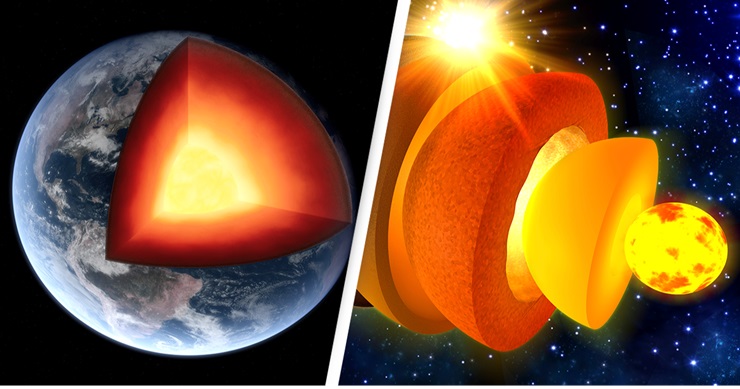A recent study on lava deposits in northern Canada suggests that the Earth’s core may be leaking. The rocks from Baffin Island contain higher levels of the isotope helium-3 and a higher ratio of helium-3 to helium-4 than any other location on Earth’s surface. Helium-3 is a rare, primordial nuclide that has been present in Earth since its formation. Over millions of years, helium-3 can escape from the Earth’s surface into the atmosphere and eventually into outer space.
Traditionally, the source of helium-3 found in rocks on the Earth’s surface was believed to originate from a mantle-based reservoir. However, the new findings suggest that the helium-3 may actually be coming from the outer core. This research was conducted by geochemist Dr. Forrest Horton and his team from the Woods Hole Oceanographic Institution in Massachusetts.
The researchers explain that the volcanic activity on Baffin Island was driven by a vast upwelling from the mantle, similar to the plume that causes eruptions in Iceland. The team reported the highest magmatic helium-3 to helium-4 ratio yet measured in terrestrial igneous rocks in the olivines from Baffin Island lavas. They hypothesize that the extremely high helium-3 to helium-4 ratio in these lavas might derive from the Earth’s core. This hypothesis is supported by the additional presence of neon with an isotopic ratio similar to that found in interstellar nebulae in the Baffin Island lavas. The full findings of the study are published in the journal Nature.
Key Takeaways:
- A study of lava deposits in northern Canada suggests that the Earth’s core may be leaking, as indicated by unusually high levels of the isotope helium-3 and higher ratios of helium-3 to helium-4 found in these rocks.
- Previously, the source of helium-3 found in rocks on the Earth’s surface was believed to come from a mantle-based reservoir, but the new findings propose that it might be originating from the outer core.
- The research team also found neon with an isotopic ratio similar to that found in interstellar nebulae in the Baffin Island lavas, further supporting the hypothesis that these elements might be seeping from Earth’s core.
“A study of lava deposits in northern Canada may have found evidence that the Earth’s core is leaking. The rocks — on Baffin Island — contain higher levels of the isotope helium-3 and higher ratios of helium-3 to helium-4 (³He/?He) than seen anywhere else on the Earth’s surface. While the source of helium-3 found in rock on the Earth’s surface has long been thought to have been a mantle-based reservoir, the new analysis suggests that this flux may be coming from the outer core instead.”
More details: here


Leave a Reply